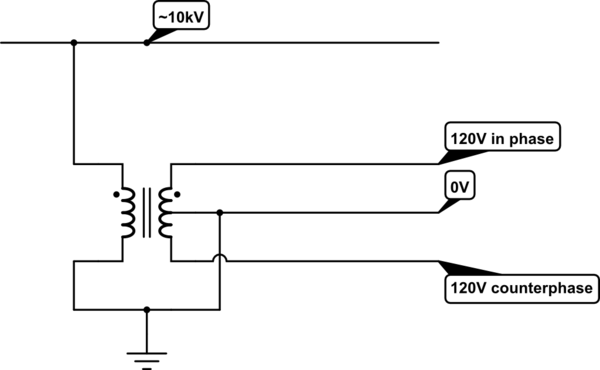So you have a pretty standard SWER setup. Turns out because SWER is considered "low-cost", local electricians tend to build it "even lower cost" and skip the secondary grounding. Like this:


simulate this circuitsimulate this circuit – Schematic created using CircuitLab
My firstFrom what you described, my bet wasis the shared ground rod is simply too small or too rotten or the earth humidity is too low.
It doesn't matter much for the primary side as The reason why the ground currentphases on the primarysecondary behave differently is low. Forbecause the secondary, currents are higher and it makes a difference whether they are current is in phase or in counterphase with the primary ground current.
The problem with this shared ground rod is, the grounding needs are different for the primary and secondary.
The utility company electricians (who I expect they know what they are doing) installed a primary ground rod for a constant current of a few amperes, and a loss of a few dozen volts from 10kV doesn't matter much. So, primary grounding doesn't give you headaches. A small rod suffices, even in dry earth.
On the secondary, you don't have a constant ground current of a few amperes, but instead, you want to have a ground fault current of a few thousand amperes which should trip the breaker immediately. Three problems with the above setup arise:
The primary grounding is built much too weak for these ground currents. You will have a lift of the neutral to the 10kV level in case of ground fault. This can break even more insulations on the secondary. Random appliances in the house may be broken after a ground fault.
The ground fault current may damage the primary ground rod, which isn't made for currents of thousands of amperes, not even for a second.
The breaker may not trip because of the above two problems.
